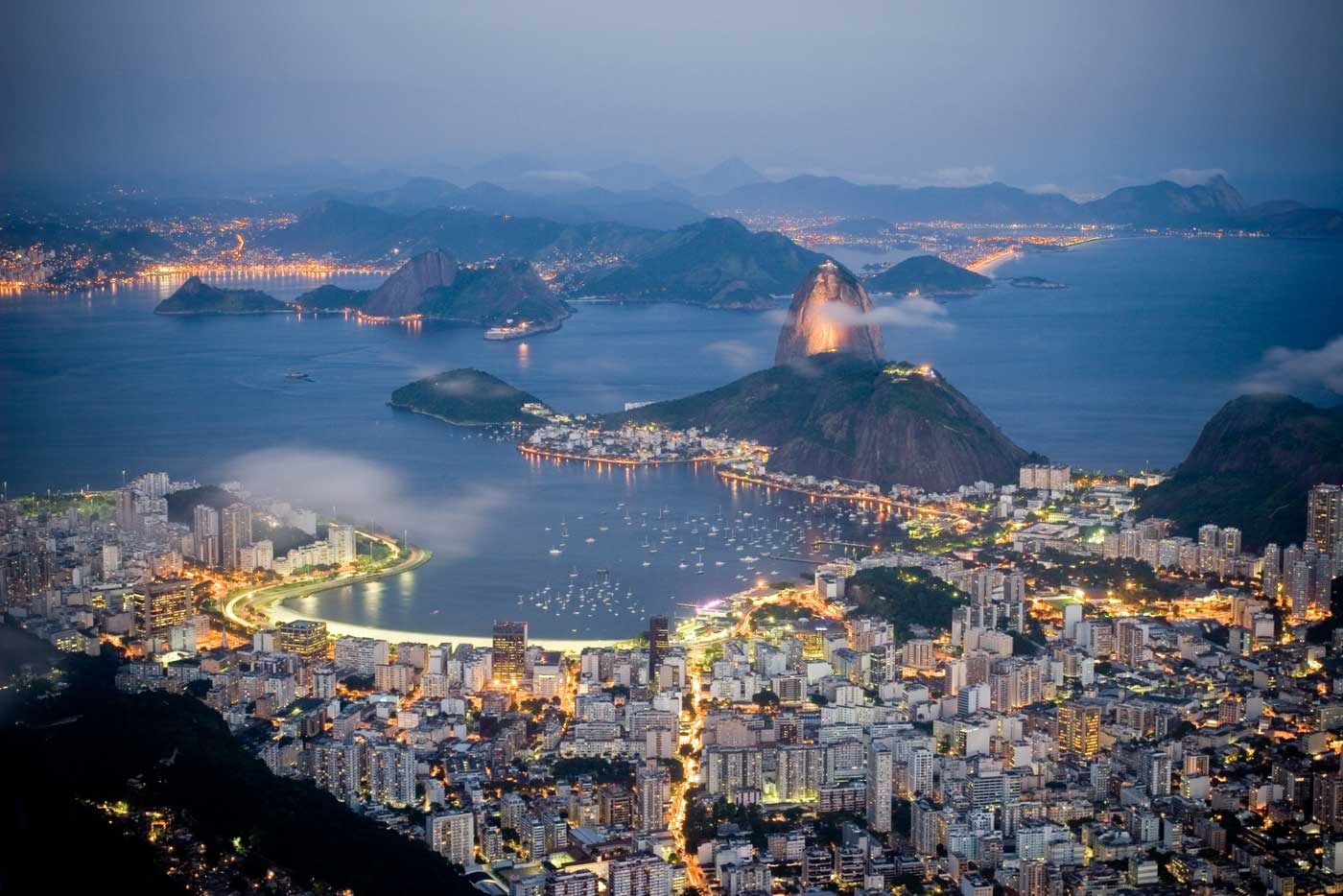| Situated in the area of Urca, the Pão de Açúcar (Sugarloaf Mountain) showcases a spectacular mountain viewpoint of Rio. The view is best appreciated on a clear day so make sure to check the weather forecast. Don't miss the attractive scenery of the coast and greenery, along with the cicade maravilhosa.
Samba City, occupying an area of about 114.000 sq. meters, is a fairly recent addition to Rio's infrastructure. Constructed by the City Hall, it is located in the adjoining town of Gamboa. The reason for constructing the city in Gamboa was because the city is the sacred birthplace of Carioca samba. Its architectural design is geometric in shape and includes the districts of Saúde, Santo Cristo and Gamboa. The thought behind the architecture is of accepting and acknowledging the ancestral dance of Samba, which came from Africa.
The statue of Christ the Redeemer is a part of the new edition of the Seven Wonders of the World. Acting as a representative of Rio, the statue completed 77 years of its existence in 2008. The attraction, inaugurated in 1931, was built approximately 38 meters high and covers 710 meters of the Corcovado Mountain. Initially one had to climb the 220 steps to reach the statue situated on top of the mountain. However, today visitors can get to the statue by a twenty-minute tram ride or by car.
The Sugar Loaf Cable Car is one of the oldest cable cars in world and the first one in Brazil. Launched in 1912, the invention was the brain child of Brazilian engineer, Augusto Ferreira. Millions of tourists have travelled by the cable car, which includes some celebrity names like Roberto Carlos, Brooke Shields and Ronaldinho. The car travels through three stations: Praia Vermelha, Morro da Urca and Pão de Açucar, which are interconnected together by four cable cars.
Ipanema beach, tagged as the best urban beach in the world, is famous for its water sports opportunities. With the arrival of summer season, the place becomes jam packed with tourists who come to enjoy the clean waters, rough waves and the surrounding neighbourhood. All over the beach one can see people sun bathing, playing beach volleyball and swimming. Ipanema is very famous for its beach events where tourists and locals come together to play games like beach soccer, beach volleyball, foot volleyball, etc. Moreover, it is an ideal place for people who are good at surfing, body boarding, skim boarding. However, novices need to stay away, as the waters can get quite rough. Sunday is the best day to visit Capoeira as the lane is open only for pedestrians. Other highlights include the Street Carnival and the Hippie Fair where visitors can buy some Brazilian handicrafts or musical instruments.
The Copacabana neighbourhood (which was just a small fishing village till the 1900's) flourished rapidly after the inauguration of the Copacabana Palace Hotel. In fact, the area is divided into two beaches, Leme beach and the actual Copacabana beach. The area is constantly brimming with tourists as they hang around the attractive beach, kiosks, bars and restaurants. What actually made this area famous are the Copacabana fort and the Palace hotel. In fact, the hotel has now been declared as part of Brazil's natural history. The Fort which dates back to 1914, today houses the Army Historical Museum. Ammunitions dating to the early 20th century are displayed here.
The largest urban forest in the world, Tijuca National Park is home to hundreds of Amazonian species of plant and animal life. This forest is one of its kinds because it has been replanted by man in the early 1900s after years of deforestation for coffee plantations. Covering a space of around 3,200 hectares, Major Gomes Archer, took the initiative to reforest the area with seedlings native to the Atlantic eco system. To attract tourists, over time restaurants were opened and public baths were installed. Today, every year millions of tourists visit this amazing forest to discover its wildlife.
Lagoa Rodrigo de Freitas mostly known as Lagoa is a lagoon and a district in Rio that is bordered by Ipanema, Leblon, Gávea, Jardim Botânico, Copacabana, Botafogo, and Humaitá districts. It attracts a lot of tourists during the Christmas season when a special Christmas tree erected on a floating platform, moves about in the water. The lagoon today offers engaging entertainment options like night clubs, bars, restaurants and quality hotels. It is also the headquarters of the soccer teams - Flamengo and Botafogo. There are a number of free sport courts, bicycle, nautical sports facilities and jogger's lanes in addition to playgrounds for children and gourmet food kiosks.
Joatinga, though less frequented by tourists, is also ironically the most sought after by those who want to relax and rejuvenate. This 220m long, white sandy beach is one of the most well protected natural reserves in Rio. Featuring the ecological diversity of the Atlantic rainforest, tourists should not miss out on the mangroves and the small tribe of Caiçara. A crossover between forests and virgin beaches, this beach is a dream come true for surfers.
Former home of art patron and industrialist, Raymundo Ottoni de Castro Maysa, Museu de Chácara do Céu displays a variety of modern art by artists such as Lygia Clark and Portinari. It also contains Brazilian artefacts dating back to the 17th and 18th centuries. Parque das Ruínas, famously known for staging musical concerts is connected to the museum. The park is not only aesthetically pleasing, but also contains the ruins of the house that belonged to Brazilian heiress Laurinda Santos Lobo. Before the heiress died in 1946, professors and some of the best artists from Rio used to gather here. Tourists visit this attraction not only because it is a learning portal, but also to enjoy panoramic views of Centro and Baía de Guanabara.
Moreira Salles is a cultural centre and non-profit organization located close to the Parque de Cidade in Rio. It reflects the changing faces of Rio and the rest of Brazil through old photographs and memorabilia. This informative centre also exhibits work from famous artists and attracts many tourists who are interested in learning about the Latin American country's past.
Located along the Atlantic coast, Morro do Leme is an environmentally protected area that secures the Copacabana beach up at the Leme neighbourhood. It contains over 10 hectares of rainforest filled with exotic species of birds and animals. Book a tour in advance.
10-10-2017
|






